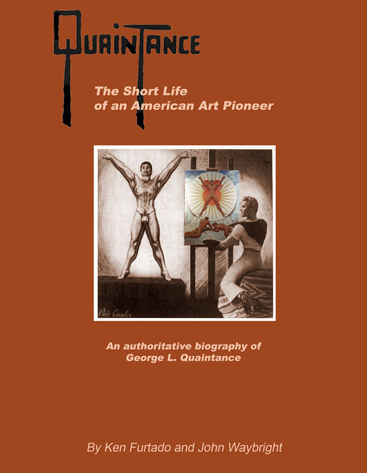- Details
- Written by: Ken Furtado
 The lost works I reported about on Dec. 14, 2013 were only the tip of the iceberg of lost art by Quaintance: those canvases Quaintance considered to be part of his "Male Physique" period. Essentially, they were the paintings he mass-reproduced as chromes and as 8x10 black and white photographs and marketed in magazines. But Quaintance painted a lot more than those 54 canvases — such as the Bugle Boy depicted in the first part of this article.
The lost works I reported about on Dec. 14, 2013 were only the tip of the iceberg of lost art by Quaintance: those canvases Quaintance considered to be part of his "Male Physique" period. Essentially, they were the paintings he mass-reproduced as chromes and as 8x10 black and white photographs and marketed in magazines. But Quaintance painted a lot more than those 54 canvases — such as the Bugle Boy depicted in the first part of this article.
What became of the original art for the 11 covers he designed for Your Physique magazine, when he was the Art Editor? Each of those issues states on the contents page that the cover is "From a painting by George Quaintance." When I interviewed Joe Weider, the magazine's publisher, at his Woodland Hills, Calif. office in 2003, I asked him about those covers. His high-ceilinged fortress was crammed with art, much of it in the form of portraits and paintings of strong men who had appeared in his magazines over the years. But nothing by Quaintance. After thinking for a while, Joe muttered something about robberies that had taken place long ago, or the possibility that the paintings were archived in warehouses in Montreal, Canada, where his publishing empire was born. He offered to check with his brother, but that inquiry turned up nothing.
- Details
- Written by: Ken Furtado

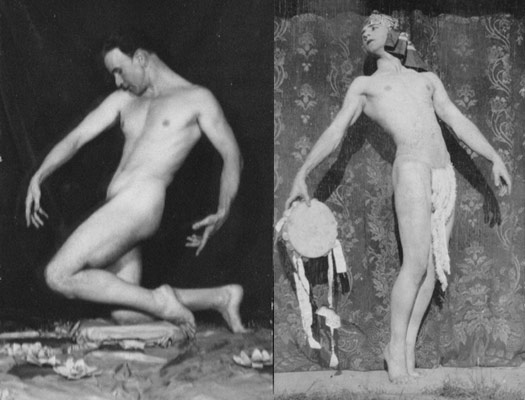 Here are four final examples in the oddities category. The lissome "Matador" may be the oddest of all. The photograph that was made available to me is of poor quality. It was taken from a scrapbook in the Quaintance family, titled "Self & Family." It does not look like the work of Quaintance at all, but he loved melodramatic posturing (see b&w snapshots of young George), so perhaps it's an early self-portrait.
Here are four final examples in the oddities category. The lissome "Matador" may be the oddest of all. The photograph that was made available to me is of poor quality. It was taken from a scrapbook in the Quaintance family, titled "Self & Family." It does not look like the work of Quaintance at all, but he loved melodramatic posturing (see b&w snapshots of young George), so perhaps it's an early self-portrait.
- Details
- Written by: Ken Furtado
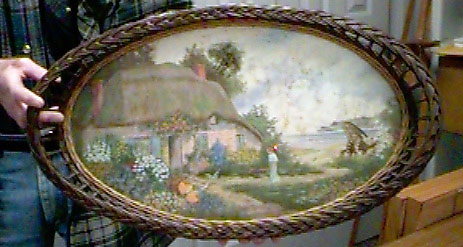 When an artist is dead, who is left to say "yes, this is one of his works" or "no, he did not do this"? As we have seen in the case of Mrs. Milton Stevens, an unscrupulous seller can misrepresent an artist's work in order to sell it for a higher price. Motives aside, anyone can claim, absent a definitive canon, that this or that work was created by a certain artist. In a later article we'll look at some works that have been represented on the Internet as being Quaintance pieces that are not. But for now we'll look at some odd works that actually are by Quaintance. Part 2 considers items that are not drawings or paintings in the traditional sense; part 3 will give you a look at some other unknown works that you'd never suspect were by Quaintance. A thank-you to the Finter-Salvino archive for much of this material, which has been carefully maintained and preserved by descendants of Quaintance's family.
When an artist is dead, who is left to say "yes, this is one of his works" or "no, he did not do this"? As we have seen in the case of Mrs. Milton Stevens, an unscrupulous seller can misrepresent an artist's work in order to sell it for a higher price. Motives aside, anyone can claim, absent a definitive canon, that this or that work was created by a certain artist. In a later article we'll look at some works that have been represented on the Internet as being Quaintance pieces that are not. But for now we'll look at some odd works that actually are by Quaintance. Part 2 considers items that are not drawings or paintings in the traditional sense; part 3 will give you a look at some other unknown works that you'd never suspect were by Quaintance. A thank-you to the Finter-Salvino archive for much of this material, which has been carefully maintained and preserved by descendants of Quaintance's family.
- Details
- Written by: Ken Furtado
Of the 56 canvases that represent George Quaintance's "male physique" period, the whereabouts of 20 remains unknown. For nine of those, I have anecdotal information; for the remaining 11 I have no information whatsoever. Readers of this blog who may have information about any of these works are encouraged to post a comment or reply privately via email. (Note: Images are not shown in their true aspect ratios.)
It is also known that Quaintance painted at least six different studies of a handsome blond named Stephen Barclay, of which at least two were nudes. This was prior to the "Male Physique" paintings. Only two of the Barclay paintings are known today, neither of which is a nude.
- Details
- Written by: Ken Furtado
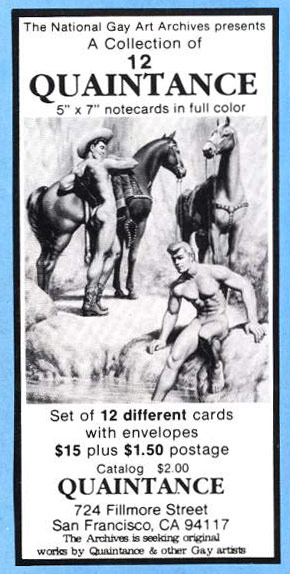 In 1982, a company calling itself Fun House produced a set of color notecards featuring 12 Quaintance paintings. The cards themselves measured 5x7 inches, were blank on the inside, and came with ivory-colored envelopes. The source of the original images is a mystery, but it surely was not the original paintings because the color reproduction on some of the cards is garish and inaccurate.
In 1982, a company calling itself Fun House produced a set of color notecards featuring 12 Quaintance paintings. The cards themselves measured 5x7 inches, were blank on the inside, and came with ivory-colored envelopes. The source of the original images is a mystery, but it surely was not the original paintings because the color reproduction on some of the cards is garish and inaccurate.
An article by Ted Smith, "The Art of George Quaintance," that appeared in issue #76 (February 1983) of In Touch for Men, announced the formation of an organization called the National Gay Art Archives (NGAA). It was described as "a non-profit organization dedicated to preserving this important part of our cultural heritage." The article contains reproductions of most of the notecards, a San Francisco address from which the cards might be ordered, a lot of factually incorrect information about Quaintance and his art studio and a plea for donations of money or art. Elsewhere in the issue is an illustrated advertisement for the cards.
- Details
- Written by: Ken Furtado
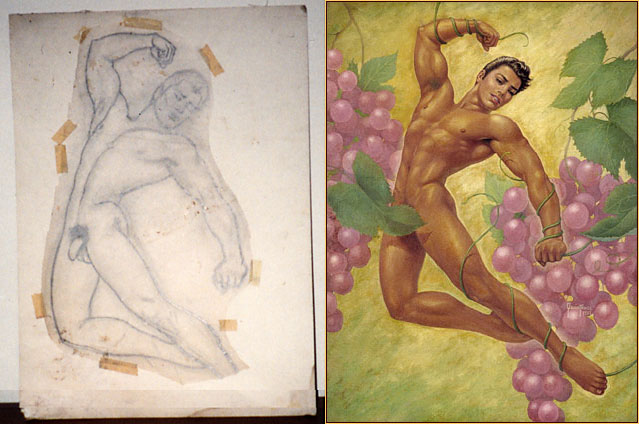 Though their subject matter may have been worlds apart, two techniques of Normal Rockwell and George Quaintance invite comparison. Both attended the illustrious Art Students League of New York, an establishment that has been around since 1875. Rockwell's attendance there preceded Quaintance's by nine years — 1910 versus 1919 — but they appear to have "taken home" some of the same learning.
Though their subject matter may have been worlds apart, two techniques of Normal Rockwell and George Quaintance invite comparison. Both attended the illustrious Art Students League of New York, an establishment that has been around since 1875. Rockwell's attendance there preceded Quaintance's by nine years — 1910 versus 1919 — but they appear to have "taken home" some of the same learning.
The first technique was the execution of a detailed, full-sized sketch in charcoal on onionskin or tracing paper that would then be transferred to canvas. The artist would pin or tape the sketch to the canvas, then place transfer paper (similar to the carbon paper we used with typewriters) between the sketch and the canvas and, by re-tracing the original, transfer the design to the canvas.

